After years of dangling by a thread, the I-5 Rose Quarter project faces a moment of truth.
The Oregon Department of Transportation (ODOT) project has lost several major battles in the past few weeks. It faced a setback in a lawsuit from a coalition of advocacy groups, it has lost vital federal and state funding, and two of the project’s most senior leaders have decided to walk away from it.
Now the Oregon Transportation Commission (OTC), the Governor-appointed board that oversees ODOT, will call the question at its meeting Thursday: Should ODOT keep driving this car down the road even as the wheels come off? Or is it time to pull over and reconsider if the trip is even worth taking? Agenda item F at tomorrow’s OTC meeting poses a stark decision for the body’s five members: “proceed as planned” or “pause to evaluate next steps.”
To prep for this important meeting, I’ve gathered some context on the lawsuit, the funding situation, the staff exodus, and the OTC’s decision below…
The lawsuit
ODOT officials were due in court Monday July 14th to defend a lawsuit filed by a coalition of advocacy groups led by No More Freeways. Their complaint alleges that ODOT’s I-5 Rose Quarter Project is incompatible with the City of Portland’s Comprehensive Plan and the Regional Transportation Plan because of its intention to expand a freeway, its failure to consider tolling, and its violation of environmental standards.
ODOT initially maintained that the project was compatible with those plans and the plaintiffs were ready to argue their case in court. But just 11 days before the trial was set to begin, ODOT officials changed their mind and formally withdrew their finding of compatibility.
“We think one of two things happened,” No More Freeways co-founder and and lawsuit plaintiff Chris Smith told BikePortland. “They realized we had some strong points and are going to attempt to rewrite the findings [which Smith doesn’t think will be successful], or they simply were not ready for trial and this is just a delay tactic.”
The trial is now scheduled for January.
The funding
One day after ODOT’s legal retreat, they learned Trump’s budget bill wiped $412.5 million of expected project grant funding off their books when it eliminated the Reconnecting Communities and Neighborhoods grant program and rescinded all unobligated funding. This was a massive blow to ODOT and the project’s already-grim funding prospects.
With the Oregon Legislature seen as ODOT’s last hope for good news, the demise of the transportation funding package at the end of June was another major blow. Keep in mind, this terrible funding news is not new for this project. For the past three years, OTC members have expressed deep skepticism about this project’s financial prospects.
In 2022, former OTC Chair Bob Van Brocklin said, “I don’t think this bridge gets built without being tolled… if we don’t have tolling… I don’t think we don’t have the resources to build the Rose Quarter project.” Then two years later, Governor Tina Kotek paused tolling.
At that same 2022 OTC meeting former OTC Commissioner Sharon Smith wondered aloud, “Is the Rose Quarter really where our state wants to spend the money?”
Then in 2023, OTC Commissioner Lee Beyer said, “Given what we all know about our financial picture at this point, I’m not sure how we finance this project.”
And in May 2024, OTC Chair Julie Brown admitted that, “From a business sense, it doesn’t make sense that you commit to something when you don’t know where you’re going to find the funding.” And Commissioner Jeff Baker added, “We’re in a pickle, because we’re spending more than we expected to spend, and we’ve probably got a real credibility problem around the state.” At that same meeting, even ODOT Director Kris Strickler acknowledged the project’s extreme funding challenge, saying that without broad partnerships and a state funding package, “I don’t see big projects like this going forward.”
And all that was before Trump’s assault on grant funding and the state legislative debacle.
The exodus
ODOT leaders establish their careers around major projects like the I-5 Rose Quarter. For young, up-and-coming managers, being assigned a leadership role on such a high-profile project is a dream come true, a chance to burnish a resume and build a legacy. So when two of ODOT’s rising stars opt to jump ship, it must be seen as a harbinger of demise.
ODOT Urban Mobility Office Director Brendan Finn left the agency back in November. His decision came a year after he walked out of an emotional project advisory committee meeting and came just months after Kotek put a pause on tolling.
I-5 Rose Quarter Project Director Megan Channell was named “Woman of the Year” by a professional development group for her leadership on this project earlier this year. At the awards gala, Channell would have announced that the project she dutifully led for six years was set to begin construction this summer.
But instead of celebrating the biggest moment of her career, Channell resigned before a single shovel hit the ground.
The decision
OTC members were skeptical about this project’s future before its latest funding setbacks, legal losses, and leadership exodus. At their emergency meeting Thursday, they’ll decide if the State of Oregon should continue to invest in a $2.0 billion project when a mere $303 million is available to spend.
Even if they decide to proceed, the immediate conversation about cost and scope reduction will not be pleasant. They’ve made commitments to their Historic Albina Advisory Board that are politically impossible to break, and the only elements of the project with broad public support in Portland have nothing to do with adding new lanes to I-5.
According to Thursday’s meeting documents, the pause option would allow ODOT and the OTC to, “Re-evaluate the project and determine if there is an opportunity to redesign the project in a way that reduces the cost, while still meeting the transportation safety, connectivity and growth needs of our state.”
That doesn’t sound fun either, especially since any major change in the project is likely to trigger another National Environmental Policy Act (NEPA) analysis and extend the timeline even further. And without expected maintenance that would have been completed with the project, ODOT would be on the hook for even costlier upkeep down the road.
Like I said in May 2024, the OTC faces no good options when it comes to resolving the problems with I-5 Rose Quarter. It’s almost as if these expansive (and expensive) freeway megaprojects are inherently flawed and we should start looking for different types of solutions in the future.
That’s what anti-freeway activists want. No More Freeways has launched a campaign aimed at asking the OTC to pause the project. “With ODOT poised to consider layoffs of hundreds of state employees and an enormous backlogged of deferred basic highway maintenance and street safety projects unfunded,” NMF’s website states, “the Oregon Transportation Commission must prioritize using our limited existing funding to preserve our existing transportation system…”
If you were an OTC member, what would you do?


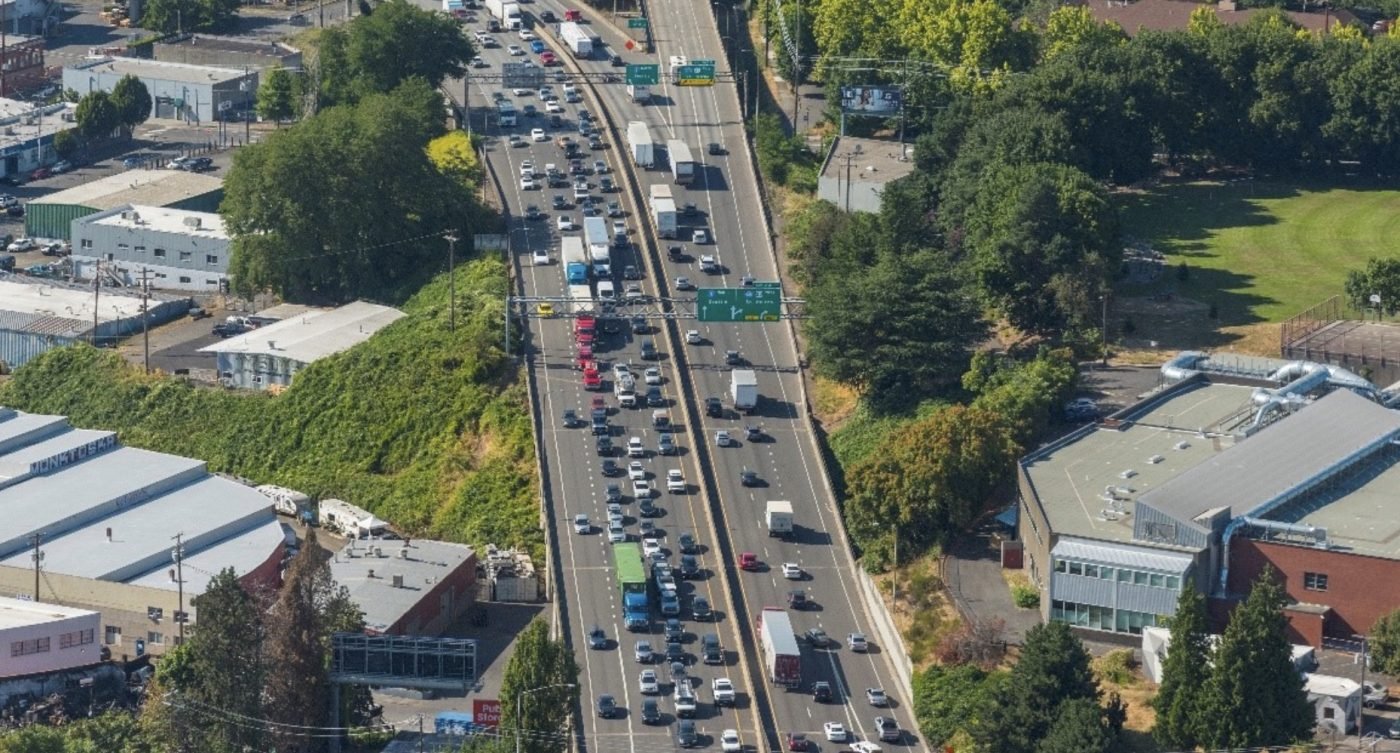
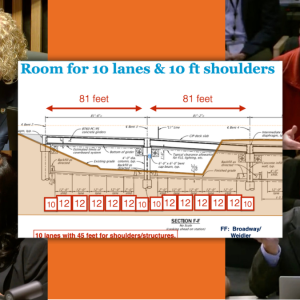
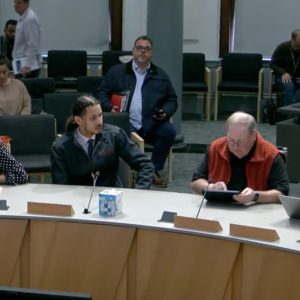
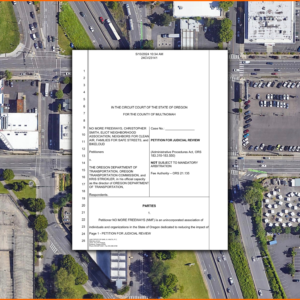
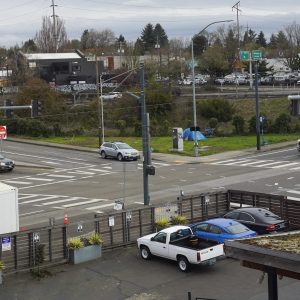
Thanks for reading.
BikePortland has served this community with independent community journalism since 2005. We rely on subscriptions from readers like you to survive. Your financial support is vital in keeping this valuable resource alive and well.
Please subscribe today to strengthen and expand our work.
How can ODOT still push for this ridiculous overpriced wasteful cash grab project that they admitted will not increase vehicle capacity, while they are proposing laying off their own employees because they are out of money?
Not sure if this is a Comment of the Week, but it might be the Question of the Year.
Who makes very large campaign contributions? I’ll tell you it’s not you or I.
How many former ODOT employees or legislatures end up working for Construction companies?
Money is king in Portland and Salem, those with it, have the largest voices to be heard. The rest of us don’t add up to a hill of beans.
The question is not how many former employees work for construction companies, but how many work for the consultants who are the real drivers of stupid projects like the Rose Quarter. In fact, the lead consultant on the Rose Quarter project had two former mayors of Portland on their payroll. Unlike construction companies, who get hired on the basis of low bid, consultants get hired not the basis of “qualifications”, which really equate to how many old friends and allies of DOT staff the consultants happen to have on their payroll. In fact, when hiring consultants it is illegal even to ask for costs – due to laws enacted by consulting industry lobbyists.
Uhhh — are you sure about that? I’ve submitted a budget (sometimes very detailed with individual staff hours per task) with every proposal I’ve ever submitted to a client.
They committed to building in the 2017 transit package, to be funded by tolling. Then Kotek froze tolling, and they are left committed to a job they are not enabled to complete.
How do we get people to pay for something that they were getting for “free”? How do we get Oregonians to realize that our car centric transportation system is actually unaffordable?
Built by unpaid debt from the federal government, it was supposed to be such an economic boon that the increased tax revenue would easily pay for it’s maintenance on a state level. But as we all know, that was just a pipe dream.
To answer Jonathan’s question, if I were an OTC member, I’d do exactly what I asked them to do in the email I sent them through NMF today: scrap the project and focus on maintenance and operations. To the extent that the project’s state goals, the need to address safety in the corridor, must be addressed, they should be done by directly or indirectly getting cars off of the highway, e.g. through tolling and investments in mass transit. To the extent that capital money must be spent on capital projects specifically addressing the Rose Quarter, I would remove as many interchanges through Portland as possible, and I would start with the Broadway/Weidler/Ramsay interchange that has caused the design team so much heartburn for the last decade.
And if I were king for a day, I’d demand exotically clad androgenous servants fan me with giant faux feather fans and feed me a neverending supply of cotton candy. Both scenarios seem equally fantastical to me.
You say there are “no good options” but I think a GREAT option is to cancel this project! It would be nice to get the freeway caps are reconnect Albina, but not at the cost of a freeway expansion. Surely we can think of some other way to invest in reconnecting Albina, if that is the City/regional priority, and for less than $2+ billion. (Though we’ll have to do it without any help from the feds…)
I’d do whatever the person who next appoints me to the OTC when my term expires, I assume the governor, if I want to stay on the OTC. If I want to leave, I’d vote to cancel the project and make a short 30-second soundbite/spiel about it.
The elephant in the room is ODOT’s intention to make I-5 a continuous 6-lane (basic number of lanes) highway through Portland. This aligns poorly with how I-5 is actually used. The highway only carries about 19,500 through trips per day in each direction, as measured just north of the I-84 EB exit at the Marquam Bridge. For reference, a single lane on a highway can carry about 20,000 vehicles per day. Most I-5 traffic north of downtown comes from I-84 WB, US-26 EB (via I-405), and OR99E/Morrison Bridge, each of which deliver about 20,000 vehicles to the highway.
Current traffic engineering orthodoxy requires that the basic number of lanes stay constant through every interchange. This is a good general rule. But it results in crazy highway widths in urban centers, where most of the traffic is going to the urban center or turning onto the cross-freeway, rather than continuing through on the same freeway. This creates absurd scenarios in urban centers, where 6-lane freeways can quickly turn into 12-lane freeways, as a downtown access ramp and ramps from each direction of the cross-freeway are added to the freeway in quick succession. Of course, the highway still necks down to its basic number of lanes after a few exits, so the 12-lane width doesn’t accommodate any additional through capacity.
I-5 is an extreme example of this phenomenon. Six lanes is an absurd width for a highway only carrying 19,500 vehicles in each direction. But that’s what current traffic engineering orthodoxy demands. A better solution would be to plan on tapering out the left lane after the I-84 EB exit, or else have the the right lane exit onto I-84 EB. Both options are currently out of favor. But I-5 is an extreme case. This would allow one of the ramp lanes entering I-5 to be continuous–in this case it’s currently the I-405 onramp–better aligning with how the highway is actually used.
I hope we eventually see the north part of I-405 removed and I-5 and I-84 buried in cut-and-cover tunnels on the vacant/little-used blocks adjacent to I-5. This would move the EB to NB ramp south of the Rose Quarter, in which case six lanes would be a reasonable width at the Rose Quarter caps, with the onramp from US-26 EB turning into a continuous lane as it currently does at I-405, and two lanes of I-5 handling the 19,500 through-vehicles.
For future through-capacity (especially trucking), we should look to 217-US26-Cornelius Pass, with a bridge eventually built around Scappoose.
I’ve been saying the same thing about the Scappoose bridge forever. It would make so much more sense to put a six-lane bridge, fixed-height bridge over the Columbia there, and route all of the freight traffic away from downtown Portland. In fact, upgrade and re-number 217, 26, and the new section to Scappoose, and tear up I-5 through Portland.
It’s gonna happen someday.
Fantastic observation and comment.
Massive intercity interstates are such a disaster. They destroy the transportation grid, and then engineers compensate by routing local traffic onto the highways with tons of ramps. I-84 is like a second river, obstructing transportation and causing bottlenecks in Portland, except unlike a real river, it is toxic and nobody wants interstate-front property. Same with I-5, but I-5 actually destroys a large portion of the riverfront.
The broken thinking behind highway widening has an endless appetite for resources and sprawl. In urban centers- all of the money for increasing throughput should be dedicated to reconnecting the grid and pulling trips that are less than 10 miles off of the interstate.
Thank you Jonathan!
And thank you to everyone at bikeportland who has helped fund the freeway litigation and rabblerousing over the years.
http://www.nomorefreewayspdx.com/donate
How can we make comments to the state before the meeting tomorrow??
I can’t attend in person or zoom. Tax payers deserve to be heard and short notice like this is unfair.
https://forms.office.com/pages/responsepage.aspx?id=E9CwKLxGZEqNhhyKMc9ZDVkZ57dYgANGvY0zyuykVCBUOE05Mk1MV1pLWllYRDRYV0FaWVc0VTU1RiQlQCN0PWcu&route=shorturl
At first, I was very interested and optimistic about the project, then I learned that two new lanes would be added, I felt like that was kind of a blitz. I mean, maybe ODOT thought that THE ONLY WAY that they could get Portland to go along with adding a new lane in either direction was if they did something massively as cool and righteous as a glorious highway lid. Still, after I learned about the new lanes, I was supportive and optimistic.
Frankly we should have kept it more simple, made it a just a park over the top, not something for buildings, just something easy and green. The fact that a new road will be a part of the new lid is a bit of a turn-off, but I will go with the flow on that too.
Yes, I think our area needs it especially if it means that the derelict old shipyard/mill/grain silos/industrial obsolete concrete thing can be finally be removed and laid to rest.
We will need to rebalance our city in a smart and logical way. The lid is a smart move.
quite the juxtaposition of transit cuts and this boondoggle. I know which I’d rather see the money spent on.
It’s going to be a horrible look for Kotek, if her OTC votes to keep incinerating state funds for a failed project during the ODOT crisis.
welp https://bikeportland.org/2025/07/24/transportation-commission-says-state-can-move-forward-with-i-5-rose-quarter-project-395587
Pause, Oregon has no MONEY’S to work with, Laying off Transportation workers who take care of our Roads So you can Build more Roads, So I say No way, stop over Spending, Stop ripping off Oregonian.
Toll time.